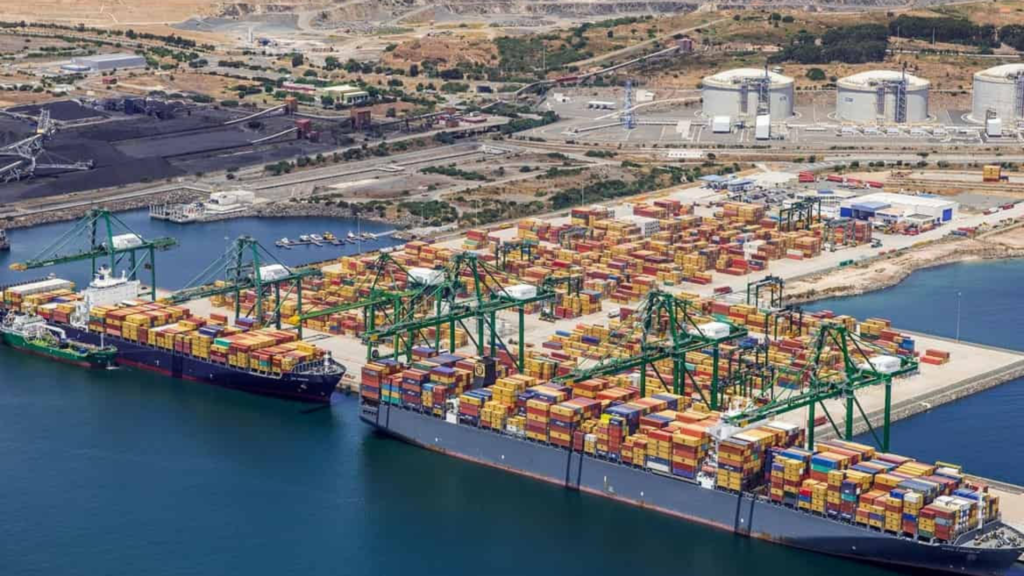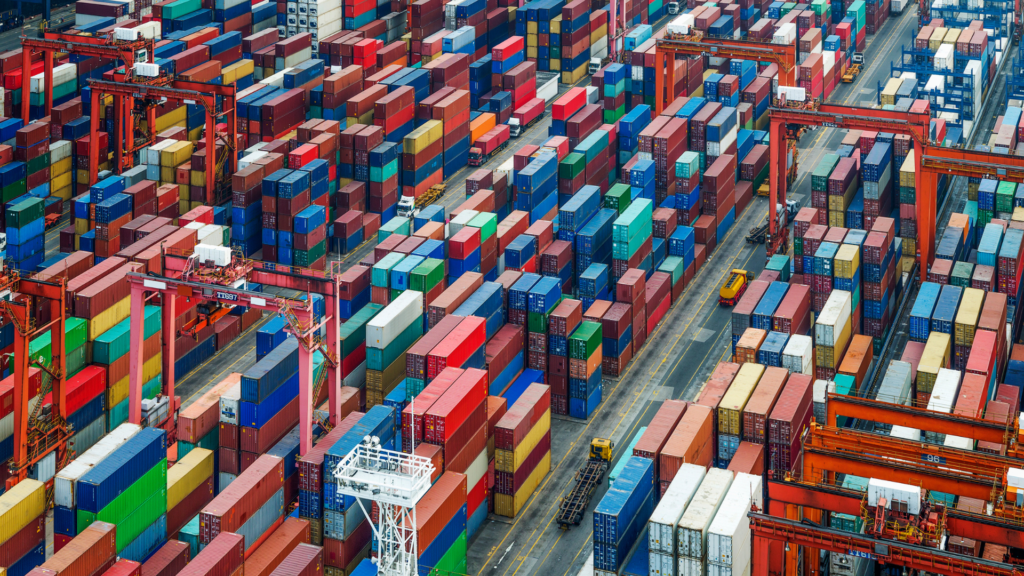Ocean Carriers Blanking Sailings to Mitigate Dip in Demand -Project44
Ocean carriers are resorting to more aggressive blanking strategies to manage a dip in demand, according to the latest report from project44.
The supply chain logistics and technology platform’s June Ocean Carrier Report says the 2M alliance of Maersk and MSC was “the most aggressive, cutting back its services by as much as 71% in the second week in May”.
“With ocean freight spot rates in freefall and demand for containers down year on year, carriers have moved to protect profitability,” said p44.
It suggested “other tactics”, including more slow-steaming, would be employed by shipping lines to underpin rates and mitigate the impact of soaring bunker costs.
Moreover, p44’s report notes the increasing trend of carriers to divert vessels to “more profitable” routes, leaving some network trades as “‘ghost” services –without a ship assigned.
“Vessel nominal teu capacity data shows there’s more tonnage available, but carriers appear to be putting the brakes on softening spot rates by tightening up supply on certain routes while switching tonnage to the most profitable tradelanes,” said Josh Brazil, VP of supply chain insights at p44.
Carriers’ Blank Sailings Check Rates Decline as Regulators Watch On
Meanwhile, cargo lead times are improving, due to an easing of port congestion, and transhipment rollovers are decreasing, according to p44.
“Vessel delays across three main tradelanes – Asia-Europe, transpacific and the transatlantic – all showed signs of improvement from the horrific months of January, February and March, which were the worst months for shippers,” said p44.
It said carriers had been “able to get to grips” with rollovers last month, thus continuing the trend of monthly declines, adding: “Industry-wide, transhipment rollovers have decreased by 26.5% from a peak of 53% in January.”
Looking ahead, p44 data indicates blank sailings are set to decline in the coming weeks as carriers gear up in anticipation of the seasonal peak season.
It said its data shows Evergreen will have the lowest average percentage of blank sailings in the build-up to the peak season with, for example, the Taiwanese carrier showing just 12% of its advertised sailings will be voided next week.
“In comparison, HMM is expected to cancel up to every other sailing in July,” said p44.
The ocean carrier report identifies the Ocean Alliance as “the most aggressive” of the vessel-sharing consortia in “pushing for market share”, by keeping blank sailings below the industry average.
Nevertheless, the OA may also be obliged to row back on market share grab if, as expected, inflationary fears and the tightening of monetary policy dampen global demand.
Referring to the publication of Container Trade Statistics’ 4.2% negative growth for global demand in April, p44 said the demand slump shown by the data was “hovering at similar levels to April 2019, before the dramatic collapse associated with the pandemic”.
Source: Loadstar
 PSA Sines inaugurates the first stage of Phase III of the Sines Container Terminal
PSA Sines inaugurates the first stage of Phase III of the Sines Container Terminal
Since the start of the works for the terminal in 2000, PSA Sines has already invested more than €200 million ($207 million) in the development of a state-of-the-art facility.
To continue to facilitate the increase in cargo volume, PSA Sines has embarked on an ambitious expansion project, worth over €300 million ($309 million), called Phase III.
When Phase III expansion plan will be fully completed, by 2028, the terminal will have doubled its annual handling capacity to 4.1 million TEU, strengthening its position as one of the main ports in the region.
The inauguration of the additional 204 metres of quay length marks the completion of the first stage of Phase III, now allowing PSA Sines to handle three mega-vessels simultaneously.
Minister Balakrishnan, the Guest-of-Honour at the inauguration ceremony, shared: “Portugal and Singapore have both stood at the crossroads of busy sea lanes connecting the Asia and Europe. PSA Sines is situated in a strategic location and is positioned to be an important transshipment hub in Europe.
“This expansion demonstrates our strong partnership as two like-minded states, united in maintaining free trade, economic integration, freedom of navigation, and compliance with international law.”
David Yang, CEO PSA EuroMed & The Americas, added: “PSA has always believed that the port of Sines, with a deep-water port strategically located at the intersection of the North-South, East-West routes, the port offers a unique opportunity for the successful development of a best-in-class container terminal for our customers.
“Today, PSA Sines has already exceeded our highest expectations and has become a major regional hub capable of serving the most important shipping routes and receiving the largest container ships.”
Source: Port Technology
August Agreements?
Just hours before the 22,000 west coast dockworkers contracts expired on Friday, July 1, the International Longshore and Warehouse Union (ILWU) and the Pacific Maritime Association (PMA) issued a statement that appeared designed to ease the concerns many stakeholders and observers have expressed.
“While there will be no contract extension, cargo will keep moving, and normal operations will continue at the ports until an agreement can be reached between the Pacific Maritime Association and the International Longshore & Warehouse Union,” the statement read. “Both sides understand the strategic importance of the ports to the local, regional and US economies, and are mindful of the need to finalize a new coastwide contract as soon as possible to ensure continuing confidence in the West Coast.”
Some insiders seem to believe that a decision will be made as early as August but most aren’t too certain about when a decision will be reached. In fact, The National Retail Federation sent a letter to President Joe Biden, co-signed by 150 other trade associations, calling for the expiring contract to be extended, thereby keeping in place a no-strike/no-lockout clause as well as the grievance procedure that allows arbitrators to issue spot rulings on disputes.
On their end, the government has been working closely with the PMA and ILWU to reach an agreement. Biden is taking no chances and will intervene at the slightest sign of trouble. His political standing ahead of the midterm elections could be heavily affected if the ports shut or slowed down.
While everyone is waiting with bated breath, neither party seems to be in any sort of rush to reach a conclusion. One thing is for certain, they know good and well what’s at stake here. The question is, who will use that to their advantage and what will the long term implications be?
Source: JOC



